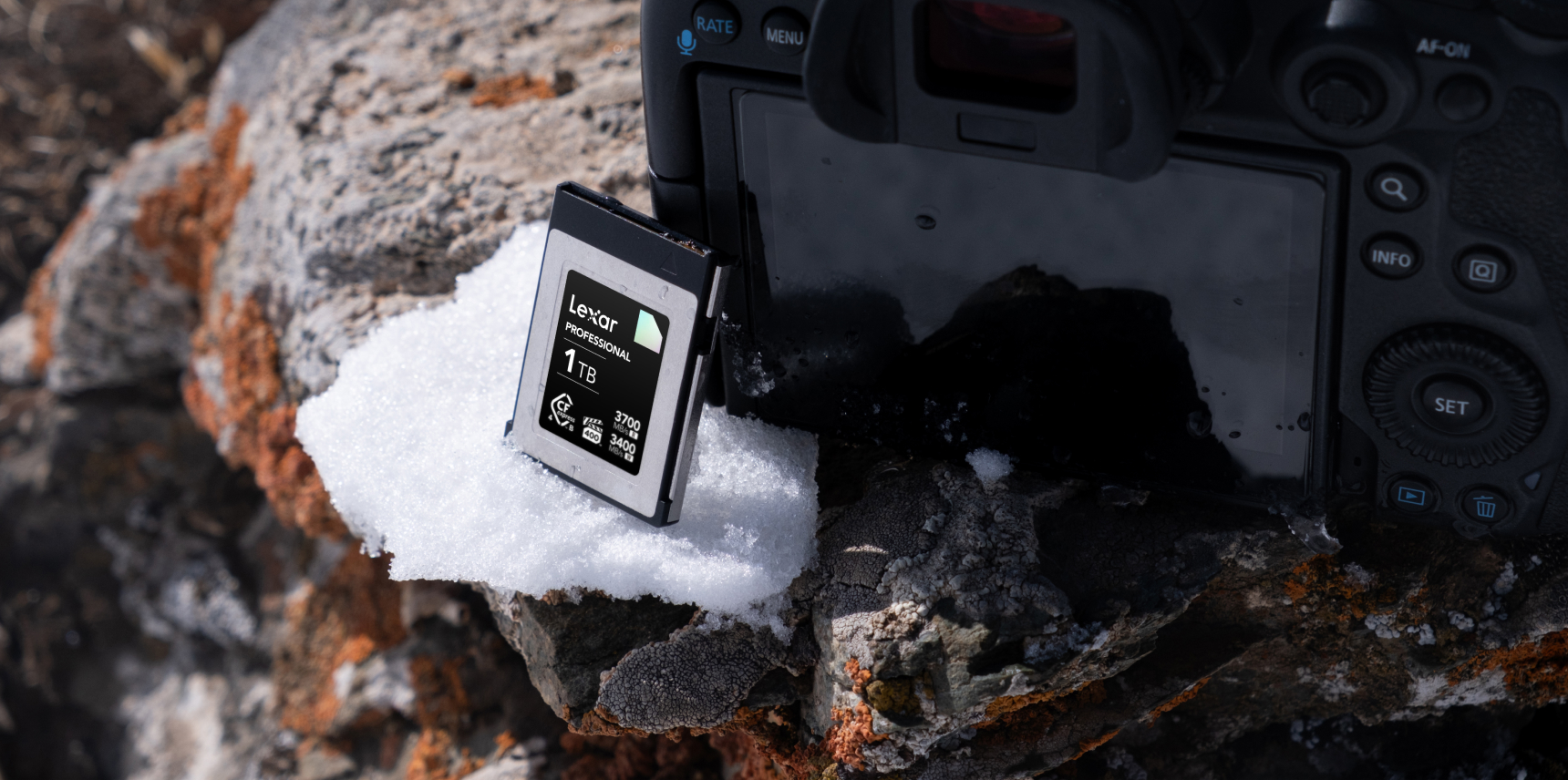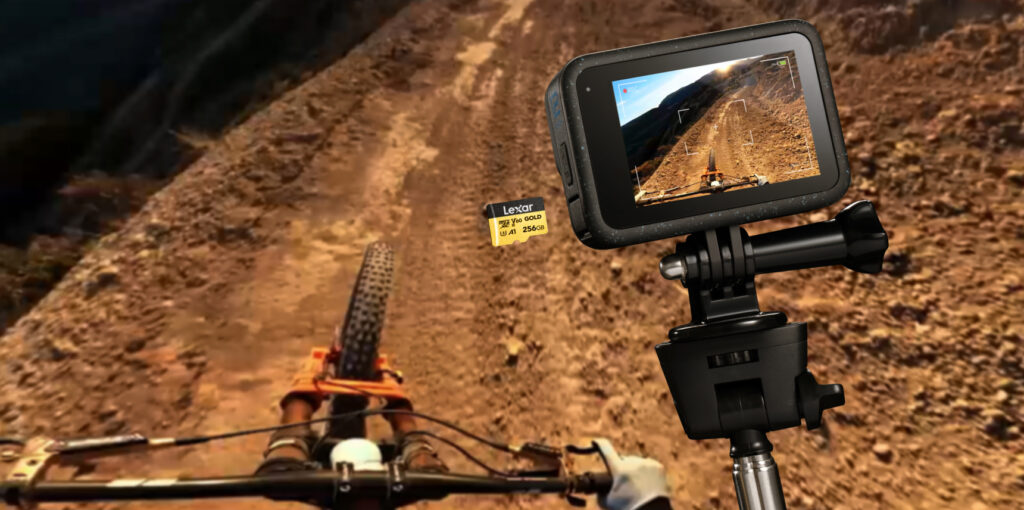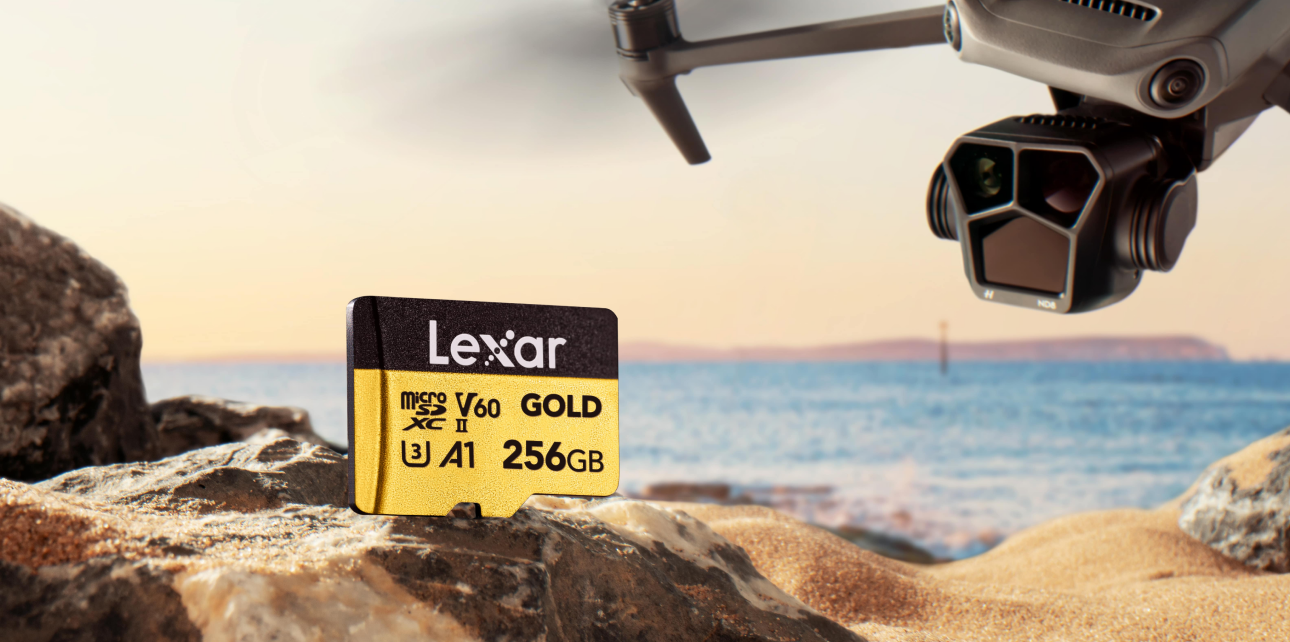
As any photographer will tell you, the difference between a good day shooting and a frustrating one can sometimes come down to your equipment. And while lenses and lighting are crucial, memory cards for cameras often get overlooked until there’s a problem.
The right memory card is absolutely essential for smooth shooting, fast performance, and safe storage of your photos and videos.
Let’s break down everything you need to know about camera memory card capacity, the types of memory cards available, how to choose the best card for your specific needs, and tips for getting the most out of them.
5 Different Types of Memory Cards for Cameras
First, let’s look at the different memory cards on the market today. It’s important to note that not all cameras accept all types of memory cards. Checking your camera’s user manual or the manufacturer’s website to confirm compatibility is crucial before making a purchase. Some camera brands, like Canon and Nikon, provide a list of compatible SD cards.
1. SD Cards (Secure Digital)
These are the most prevalent type, widely used in point-and-shoot cameras, mirrorless cameras, and even some DSLRs. They’re small, affordable, and available in a variety of storage capacities. You’ll typically come across SDHC (SD High Capacity) and SDXC (SD Extended Capacity), which offer higher storage capacities than standard SD cards.
2. microSD Cards
As the name suggests, microSD cards are smaller versions of SD cards. They’re commonly used in action cameras, drones, and smartphones. Many microSD cards are often bundled with an SD adapter, letting you use them in devices designed for full-size SD cards. This flexibility can be beneficial, offering more options depending on your needs.
3. CFexpress Cards
CFexpress cards offer blazing-fast read and write speeds designed for high-performance applications like high-resolution burst shooting and high-bitrate video recording. You’ll primarily find these cards used in professional-grade cameras and high-end cinema cameras where speed is essential for handling enormous files. CFexpress Type B and CFexpress Type A cards are popular for their compact size and high performance.
4. CFast Cards
Similar to CFexpress, CFast cards also offer remarkable speed capabilities. While not quite as prevalent anymore, CFast still has its place in professional filmmaking workflows. They can be found in high-end cinema cameras, like:
- Blackmagic Design Pocket Cinema Camera 6K Pro
- Canon EOS C300 Mark II
- Canon EOS C200
- Canon EOS-1D X Mark II
5. XQD Cards
XQD cards initially entered the market as a high-performance successor to CompactFlash cards, but they have since become outdated technology. The Nikon D850, released in 2017, was the last major camera to natively support XQD. Since then, CFexpress cards, with their superior performance, have rapidly replaced XQD as the new standard in professional photography and videography.
Specifications to Consider When Choosing a Memory Card
With a multitude of options on the market, understanding what to look for in a memory card for your camera is key. While it’s tempting to go for the absolute cheapest, factors like speed, capacity, and reliability matter in the long run.
Capacity: Matching Your Storage Needs to Your Shooting Style
Capacity refers to how much data the card can store. It’s typically measured in gigabytes (GB) or terabytes (TB). This impacts how many photos or how much video you can store before needing to transfer files elsewhere. Choosing the right capacity comes down to how you shoot and how often you plan to offload content. The read speed and write speed are important factors in determining how quickly your camera can access and store the images you capture.
- Lower Capacities (32GB-64GB): This range is generally suitable for casual photographers or videographers shooting stills in JPEG format or recording shorter video clips. These capacities work well if you download images regularly or only shoot occasionally.
- Mid-Range Capacities (128GB-256GB): This is a versatile range accommodating photographers shooting RAW files, which tend to be larger. It also works for videographers capturing longer footage, even in Full HD. These provide ample space for most scenarios without constant worries of filling up.
- High Capacities (512GB-1TB or more): Ideal for professional photographers, especially those dealing with high-resolution RAW files or shooting continuous high-speed bursts. This is also good for videographers filming extensive 4K or even higher resolution content. Higher capacities are excellent for those who prefer less frequent data offloading or who are working on large, demanding projects.
Speed Class Ratings
The speed class rating, typically printed prominently on a memory card, determines how fast the card can write data. Since faster speeds help prevent issues like camera lag or recording interruptions, especially when capturing continuous shots or video, understanding this rating system is crucial. This rating lets you pick a card that aligns with your camera’s capabilities, whether you’re just starting out with basic photography or diving into professional filmmaking. It is also important for transferring data quickly.
- Speed Class: Denoted by a number inside a circle (e.g., 10), the Speed Class rating represents the minimum sustained write speed in megabytes per second (MB/s). A higher number typically equates to faster data writing capabilities. However, it’s worth noting that this rating system is older and mainly relevant for basic SD cards.
- UHS Speed Class: More relevant for modern cards, the UHS (Ultra High Speed) Speed Class is identified by a number within a U shape (e.g., U3). These cards, like UHS-I and UHS-II, use a faster data bus than traditional SD cards, delivering increased read and write performance for seamless handling of high-resolution files. Keep in mind that these cards might not function optimally or at all in older, non-UHS-compatible devices.
- Video Speed Class: Designed for the demands of video recording, this class is indicated by a V followed by a number (e.g., V30). It signifies a minimum sustained write speed, assuring smooth video recording, especially at higher resolutions like 4K. As technology progresses, we’re seeing V60, V90, and even higher ratings to cater to 8K, 360° video, and other high-demand formats. Choosing the right Video Speed Class is crucial for ensuring high-quality video recordings, especially when shooting in high resolutions or using high frame rates. It helps you avoid dropped frames and other issues that can occur when your memory card can’t keep up with the demands of your camera.
| Class | Minimum Speed | Suitable For |
| Class 10 | 10MB/s | Full HD video recording, point-and-shoot cameras |
| UHS Speed Class 1 (U1) | 10MB/s | Similar to Class 10 |
| UHS Speed Class 3 (U3) | 30MB/s | 4K video recording, burst shooting |
| V30 | 30MB/s | Similar to UHS Speed Class 3 (U3) |
| V60 | 60MB/s | High-bitrate 4K video, 8K video |
| V90 | 90MB/s | Professional-grade video, 8K RAW |
Reliability and Durability
Memory cards aren’t just about storing images—they hold memories, and keeping those memories safe is paramount.
Consider this: you’re out capturing breathtaking shots in a remote location, far from easy data backups, and suddenly, you drop your memory card and it cracks. To avoid such heartbreaking scenarios, look for cards designed with durability in mind.
Lexar memory cards are designed with features like water resistance, shockproofing, temperature tolerance, and magnetic resistance, providing an extra layer of security to protect your data. This durability is especially crucial for adventurers who capture memories in extreme conditions.
Matching Your Memory Card Selection to Different Shot List Requirements

For Photography
When capturing the essence of a moment, every detail matters. For photographers, the right memory card can make all the difference, ensuring you never miss a shot and preserving your images in the highest quality possible.
For those who demand the utmost in image quality, shooting in RAW format is essential. RAW files retain all the intricate details and dynamic range your camera sensor captures, providing greater flexibility in post-processing.
JPEGs, while more compressed, offer convenience and faster processing times. To handle these large file sizes efficiently, we recommend our SDXC UHS-II cards. With blistering read/write speeds, these cards ensure swift file transfers and ample storage, so you can focus on capturing stunning high-resolution images without interruption.

For Videography
In the realm of videography, the requirements for memory cards become even more demanding. High-resolution video capture requires not just capacity but sustained speed to handle the continuous data flow.
When stepping into the world of 4K and 8K video, the need for speed is paramount. These high-definition formats produce massive amounts of data per second, necessitating a memory card that can sustain high write speeds to prevent dropped frames and ensure smooth recording.
Lexar’s CFexpress Type B cards are engineered for such high-performance tasks. With their unparalleled speed and capacity, these cards are ideal for professional videographers aiming to capture every detail in stunning clarity.

Action and Sports Photography
Capturing the thrill and intensity of action sports requires a memory card that can handle rapid bursts and fast-moving subjects without faltering.
In action and sports photography, every millisecond counts. Your memory card must be able to keep up with the speed of your camera’s shutter to capture every moment of the action. CFexpress cards are built for this exact purpose, replacing the older XQD format with superior durability and even higher-speed performance. These cards are perfect for photographers who need to capture fast-moving subjects with precision, ensuring that no critical moment is missed.
Caring for Your Memory Cards
Knowing how to select a card is one part of the equation; the next step is making those cards last. A little TLC for your cards can go a long way. Always make it a habit to format your cards in-camera before each shoot, as opposed to simply deleting files. It ensures a clean slate and often helps maintain optimal performance. The card speed can be affected by how you care for them.
Backup Best Practices: Safeguarding Your Photographic Legacy
Don’t rely on a single memory card to hold all your data. It’s always recommended to have multiple memory cards, allowing you to swap them out during extended shoots and offering redundancy in case one fails. Just like diversifying investments, spreading your precious images and footage across several cards minimizes the risk of a single point of failure leading to catastrophic data loss.
Backing up your work immediately after a shoot is not just good practice; it’s essential. Remember, digital files can be vulnerable, and losing them can be a photographer’s worst nightmare. Establish a reliable backup routine to multiple locations including solid-state drives, or even to a combination of cloud storage and external SSDs to protect your photographic legacy.
Elevate Your Creative Output with the Right Memory Card
Choosing the right memory card is an essential aspect of photography and videography that can greatly impact your workflow and the quality of your results. Whether you’re capturing the subtle nuances of a landscape, the fast-paced action of sports, or the intricate details of a high-resolution video, your memory card needs to keep up with your creative vision.
Understanding the types of memory cards, their capacities, speed ratings, and durability features ensures that you’re equipped with the best tools for your specific needs. Investing in a high-quality memory card not only enhances your shooting experience but also provides peace of mind, knowing that your precious work is securely stored.
As you continue your photographic journey, remember that the right memory card can be the difference between a smooth, successful shoot and a frustrating one. With the knowledge you’ve gained from this guide, you’re now better equipped to choose the best memory card to elevate your work, allowing you to focus on what truly matters—capturing stunning, unforgettable moments.
FAQs about Memory Cards for Cameras
How to format an SD card for a camera
Formatting an SD card for your camera is an essential practice that prepares the card for optimal use by creating a clean file system tailored to your specific camera model. Navigate to your camera’s menu, usually finding it under “Settings” or a similar section. Look for an option labeled “Format,” “Format Memory Card,” or something similar.
Your camera might offer various formatting choices, such as “Quick Format” or “Full Format.” The “quick format” option removes files and quickly prepares the card, while the “full format” takes longer as it checks for errors.
Consult your camera’s manual for precise instructions and back up any essential data before proceeding.
Why should I choose CFexpress over other memory cards?
If your camera supports CFexpress, choosing these cards can significantly improve your shooting experience, especially for high-resolution, high-speed photography, and video recording. Their speed and reliability ensure that you won’t encounter bottlenecks during critical moments, making them the go-to choice for professionals who demand the best performance from their equipment.
Are CFexpress cards backwards-compatible with XQD card slots?
Yes, many cameras with XQD card slots can use CFexpress Type B cards through a firmware update. This backward compatibility allows photographers and videographers to upgrade to faster CFexpress cards without needing to replace their camera bodies.
Is a 128GB memory card enough for a camera?
A 128GB card can hold thousands of photos and hours of video footage, making it a solid choice for many photographers. Whether it’s enough for you depends on your individual shooting habits, the format you use (JPEG or RAW), and the resolution of your images or videos. If you’re unsure about your exact needs, it’s a good rule of thumb to consult your camera’s manual for its recommended memory card capacities or err on the side of having more storage than you think you’ll need.
What is a memory card reader?
A memory card reader is a convenient device that simplifies the process of transferring files between your camera’s memory card and a computer. They often connect via USB, acting as a bridge, making it super-easy to move your images or videos for editing, sharing, or safekeeping. Some modern laptops are equipped with built-in card readers, while others might necessitate the purchase of an external one, especially for specific memory card formats.
Can I recover deleted pictures from my camera memory card?
Accidentally deleting photos from your memory card can induce panic. It’s possible to recover them if you act quickly and haven’t overwritten the card with new data. Data recovery software, like the Lexar Recovery Tool, can often retrieve deleted files from memory cards, providing a lifeline in such situations.
Can you use a camera without a memory card?
For most photography and videography applications, especially in professional settings, a memory card is non-negotiable. While some digital cameras come with a small amount of internal memory, this is insufficient for serious shooting. Without a memory card, most cameras won’t be able to save images or videos, making them largely unusable for any professional purpose. To fully utilize your camera’s capabilities and ensure your work is securely stored, a high-quality memory card is a must-have.
Do camera memory cards wear out?
Memory cards, much like any storage medium, have a limited lifespan and don’t last forever. However, their endurance often exceeds the period in which we typically use them. Memory cards have a finite number of read and write cycles, but those cycles tend to be extensive, offering several years of reliable service.
Factors such as extreme temperatures or manufacturing defects can influence their longevity, but most often, you’ll find yourself upgrading your camera system or memory cards to ones with greater speed or storage capacity long before you wear one out. You can check your card’s warranty information for insights on its expected lifespan and any potential limitations.
Is there a difference between an sd card and a memory card?
There’s often some confusion surrounding this. Think of it like this: “Memory Card” is a general term, like “car”, used to describe any small, removable storage device, while “SD card,” is a specific type of memory card, like “sports car”, widely used in various electronic gadgets including digital cameras.
SD cards fall under the broader category of memory cards. But not all memory cards are necessarily SD cards. Understanding this distinction clarifies the categorization of these essential storage components.




